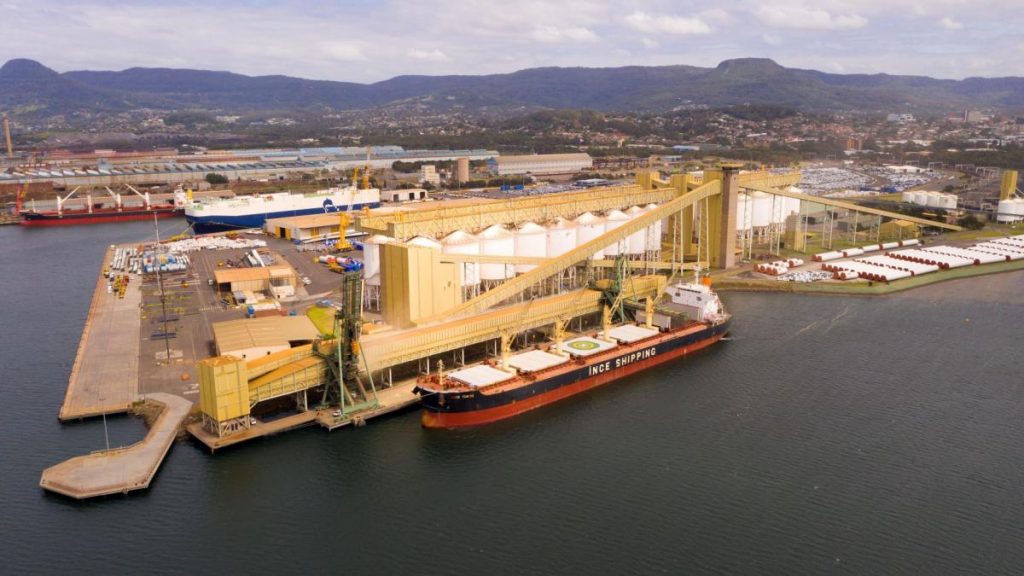Consumers heavy-lifting grains, oilseeds costs as logistics drive up prices

As the world grapples with high grains and oilseeds prices due to tight supplies, high input costs and geopolitical conflicts, more expensive logistics in agricultural powerhouses US and Brazil are also adding to overall cost of the commodities. And these expenses are further burdening consumers.
The US is one of the major suppliers of corn, wheat and soybean, while Brazil is one of the largest exporters of soybean and corn.
“Costs of all modes of transportation have risen lately. Extreme weather and labor shortages have hindered rail performance and raised bids in the secondary auction market. Barge rates have skyrocketed in response to the war in Ukraine and a limited supply of barges,” the US Department of Agriculture said in its recent Grain Transportation Report.
Similarly, ocean freight rates and diesel fuel prices have risen partly due to war-related turmoil in the Black Sea, the USDA said.
The grain vessels rate from the US to Japan, one of the largest buyers of grains in Asia, was up 23.3% year-on-year at Gulf port and up 19.7% at PNW port for the month of May, according to the USDA.
In the US, bulk of the corn for export is transported through barges domestically, while wheat is predominantly carried through rails and soybeans by trucks.
The tariff plus surcharge for transporting wheat from some of the key origins to the destinations within the US by shuttle trains are up by 5%-12% year-on-year in June. Weekly diesel price, a proxy for trends in US truck rates, is double that of last year. Similarly, the prices for transporting corn through barges have also shot up. Illinois River barge freight rate for southbound cargoes are 41% higher than the 2021 level for the week ended June 7 and 25% higher than the three-year average.
The corn price spread between Gulf port and Iowa, which represents the costs to flow grain from origin to destination, crossed over $1/bushel and reached levels that were highest in almost a decade, according to the USDA data.
In Brazil, the chief of mode of transporting grains and oilseeds is trucks and the rise in global fuel prices have led to a sharp jump in truck freights as well.
The average weekly cost of transporting grains and oilseeds by trucks from Sorriso in Mato Grosso, the largest grain and oilseeds producing state in Brazil, to Santos was at Real 454/mt for the week ended June 9, up 37.6% year-on-year, according to the Mato Grosso Institute of Agricultural Economics, or IMEA.
In April, the cost of transporting grains and oilseeds from different regions of Mato Grosso to Santos and Paranagua, the two key ports for export, was up between 15% and 29%, Brazil’s national agricultural agency Conab said in its monthly logistics report.
In Argentina, another top exporter of agricultural products, the truckers’ association Fetra went on strike for several days in April until the government yielded to its demand of a 20% hike in freight rates. The authorities also promised normal supply of diesel to the truckers.
Road transportation in Argentina accounts for 86% of agricultural volume supply, and the soybean and corn trade is heavily dependent on the trucking sector as it links the harvested grains from remote areas of the country to the ports.
As high crude oil prices linger and the Russia-Ukraine military conflict continuing, consumers are unlikely to get much reprieve from the current high costs associated with transporting commodities in the near term, according to experts.
S&P Global Commodity Insights expect Dated Brent to average $100-115/b through the rest of the year but remain very volatile as risks abound both to supply and demand.
“In general freight rates are expected to rise over the coming months due to seasonality but also the uncertainty over the Russia-Ukraine conflict is causing vessels to be out of position from the traditional trade routes. The Chinese port congestion situation is likely to lead to heightened certain price assessments as a result,” according to S&P Global Commodity Insights’ recent analytics’ report.
“The global dry bulk freight index is still more than four times higher than historical levels. For example, transporting beef, fruit and other agricultural goods from Oceania to Asia in refrigerated containers is 1.5 times more costly than it was two years ago, and we predict this will get worse in the coming quarters before it gets better,” Rabobank said in a report.
While freight prices in Brazil eased starting in April as soybean transport reduced, this may change in June, according to Conab.
“Freight price [for grain transport] is likely to increase in June as the second-crop corn harvest is scheduled to start at the end of May and beginning of June. Prices are expected to remain high in June and July, which is the harvest period for the corn and cotton crop,” Conab said.
Moreover, Brazil is also expected to harvest a record corn crop this season, which would mean greater volume of grains to be transported to ports.
Brazil’s corn production is seen at record 115.22 million mt in the marketing year 2021-22 (February-January) as compared to the previous record of 102.5 million mt in 2019-20.
With lingering geopolitical tensions, ongoing recovery from the coronavirus pandemic and supply bottlenecks across the world, the logistics environment is likely to remain challenging in the near term.
Read also
Wheat in Southern Brazil Impacted by Dry Weather and Frosts
Oilseed Industry. Leaders and Strategies in the Times of a Great Change
Black Sea & Danube Region: Oilseed and Vegoil Markets Within Ongoing Transfor...
Serbia. The drought will cause extremely high losses for farmers this year
2023/24 Safrinha Corn in Brazil 91% Harvested
Write to us
Our manager will contact you soon



